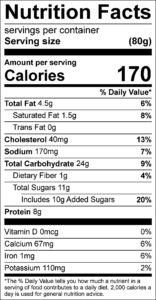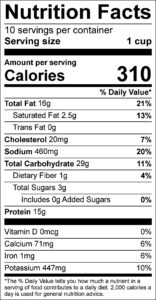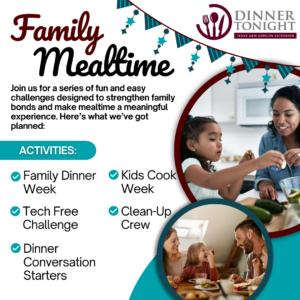This creamy cottage cheese cheesecake can be made with a few ingredients, a blender and some time (to bake)! Not only is does it taste delicious, but it also has over half the amount of calories as regular cheesecake. Top it with your favorite fruit or jam and enjoy!

- 3.5 ounces (100g) graham crackers
- 1 cup oatmeal or rolled oats
- 2 tablespoons unsalted butter
- 2 tablespoons maple honey
- 3 tablespoons water
- 1 3/4 cups 2% cottage cheese
- 1/3 cup plain nonfat Greek yogurt
- 2 whole eggs
- 1/4 cup honey
- 1/3 cup all-purpose flour
- 2 teaspoons vanilla extract
- 1 1/2 teaspoons lemon juice
- 1 1/2 teaspoons lemon juice
- Preheat oven to 320°F (160°C). Grease bottom and sides of a 9 inch (20 cm) springform mold with butter or line it with parchment paper.
- Place graham crackers, butter and maple syrup in a food processor or high speed blender and pulse until they become fine crumbs. The mixture should resemble wet sand.
- Transfer the mixture into the prepared springform mold, and gently press it down with your hands, a spoon, or the bottom of a glass.
- Bake the graham crackers crust for 15 minutes while preparing the cream.
- After baking the crust, preheat the oven to 350°F (180°C).
- Add to a food processor or blender cottage cheese, Greek yogurt, maple syrup, eggs, cornstarch, vanilla extract and lemon juice. Process until smooth and creamy.
- Pour the cottage cheese mixture over the baked crust, then use a spatula or spoon to spread it evenly.
- Bake cottage cheese cheesecake for 40 to 45 minutes, or until it has set.
- Once the cheesecake is baked, let cool at room temperature first, then refrigerate for at least 8 hours before serving.
- *Serve with fresh fruit, jam, or your favorite sauce.
*Nutritional information does not include additional fruit, jam or additions.







 tot Casserole has always been a family favorite. However, the typical recipe is high in fat, preservatives and sodium. This new and improved recipe adds cubed butternut squash for a delicious sweet flavor and added potassium. This will soon be the new family favorite.
tot Casserole has always been a family favorite. However, the typical recipe is high in fat, preservatives and sodium. This new and improved recipe adds cubed butternut squash for a delicious sweet flavor and added potassium. This will soon be the new family favorite.






